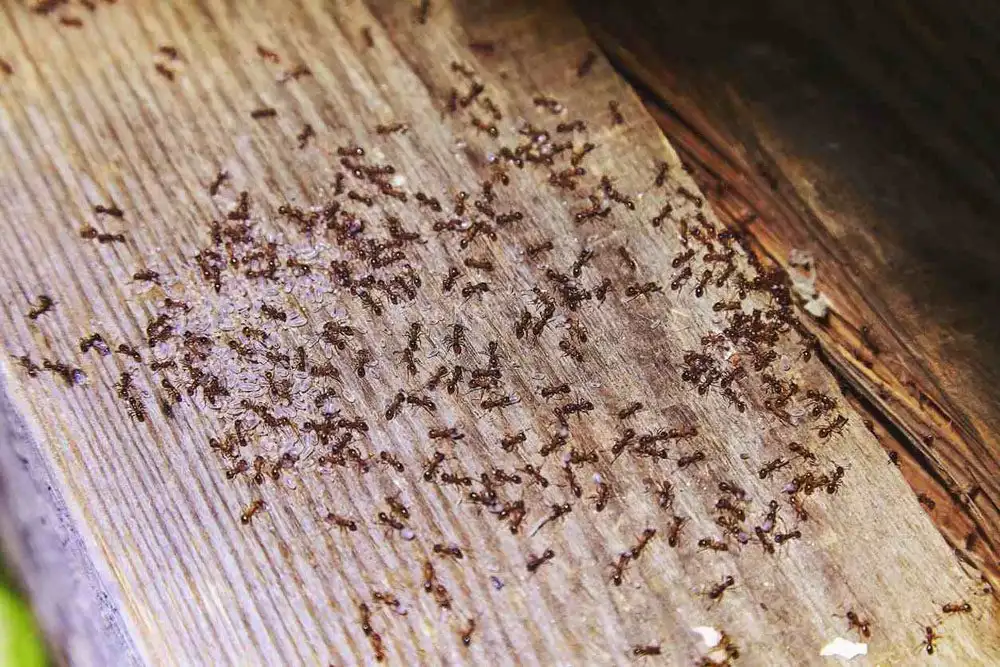Signs You May Have a Carpenter Ant Infestation
Because of their habit of nesting in houses, carpenter ants are a concern to homeowners and like termites, carpenter ant infestations can be especially dangerous for a homeowner. One nest can cause extensive damage before you even realize you have a problem. Spotting the signs early and receiving a proper carpenter ant treatment can help minimize the damage and keep recovery costs to a minimum.
Spotting Medium to Large Ants
Live carpenter ants are often the first sign of infestation. They’re typically larger than other ants, but carpenter ants can be small. They range in size from 1/4 to 3/4 of an inch long. They’ll travel quite a ways from their original nest in search of food. During spring, you may spot winged adults looking for mates. They never fly too far from their nest, so pay attention to where you spot them.
Carpenter Ant Frass
Contrary to popular belief, carpenter ants don’t eat wood, they nest in wood. When a major infestation sets in, you may start seeing little piles of what looks like sawdust coming from wood items and structures. This sawdust is called “frass” and is a good indicator you are dealing with carpenter ants and not termites. Frass is created when carpenter ants use their mandibles to excavate tunnels in wood to nest in. The most common places to spot frass are near windows, skylights, doors, and baseboards of walls and in the corners of rooms.
Ant Trails
They follow foraging trails along corners, wires, pipes and logs to food sources beloved by all ants. You may spot them following set trails in your kitchen to unsealed sweets, pet food containers and spills of sweet syrups like honey and jam.
Rustling Noises
Colonies moving inside their nests produce a distinct sound. Some people describe it as a vague “rustling” while others think it sounds like crinkling cellophane. It may come from walls voids, ceilings or other hollows within your home. Tap sharply on any area you think may have a carpenter ant infestation and listen for the sound with your ear to the wall.
Carpenter Ant Nests
Carpenter ant infestations begin with one nest but can quickly spread. During the carpenter ant removal process, it may be necessary to hunt for satellite nests both inside and outside. Look for nests in hollow areas, like inside walls and doors.
The ants are partial to water damaged and decaying wood. Windowsills and the areas beneath them are good candidates, as are neglected exterior wood piles and buildings like sheds. Ivy-covered chimneys are another common nesting ground.
Professional carpenter ant elimination utilizes identifying nest location and specialized treatments using baits and specialized residual materials to take care of your unwelcome house guests. Schedule an inspection at the first hints of infestation to protect your home and family.
"*" indicates required fields
"*" indicates required fields




